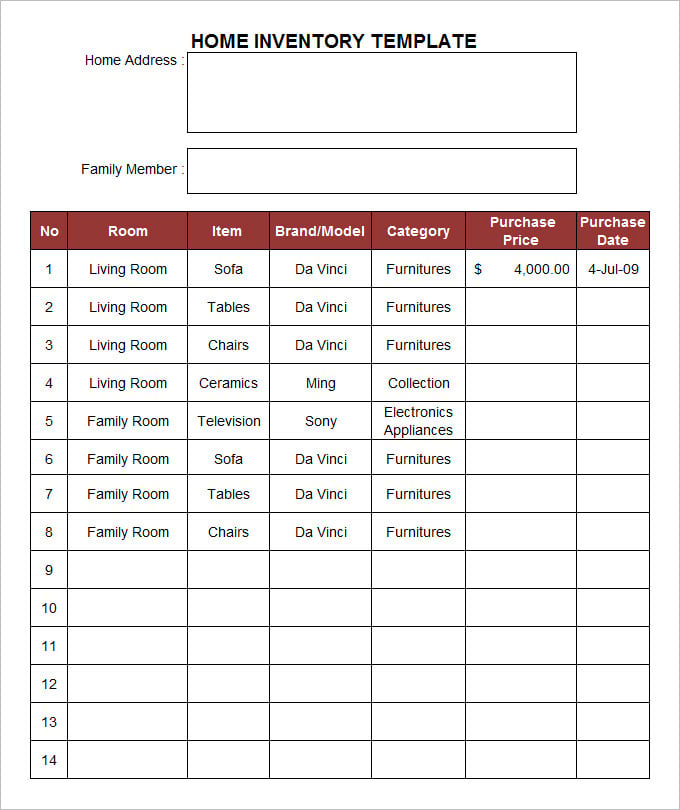

Walk through your house, and zoom in on specific items and serial numbers. Another option that can document your possessions and is easy to do is recording a video. There are a number of smartphone apps available to download that make taking a home inventory a breeze. There are many methods to catalog the items in your home that don’t require hours on a computer. If spreadsheets scare you, don’t be alarmed. Taking a full home inventory can ensure that you will be reimbursed for everything you own.
#At home inventory movie#
If there is a fire in your home, you’ll likely remember the large items, such as furniture, but what about the smaller items? Shoes, clothes, sports equipment, and movie collections can all add up pretty quickly. If you have valuable items such as collectibles, antiques, firearms, or jewelry, the more detail you can provide, the better.

If there is a fire in your home, or you are robbed, a detailed list of what was destroyed or stolen can make a claim less stressful. If you tally all your property and it comes to $150,000, you now know that you need at least that much personal property coverage. Whether you are shopping for Renters Insurance for your first apartment, or have lived in the same house for years, a home inventory can validate if you have enough personal property coverage. You’ll be able to tell if you have enough coverage It’s a good idea to save several copies of this (think digital back-ups) since a physical list will likely be ruined or lost in the event of a claim. Many insurance carriers recommend keeping a home inventory so you have an updated record of all your possessions. You can also visit for more home insurance tips.While taking a home inventory sounds like a tedious and boring task, there are several reasons why you should set aside the time to take one.
#At home inventory update#
Review and update your inventory annually and anytime you make a significant purchase.You may want to share a copy with your insurance provider to make necessary updates to your coverage. Store your home inventory and related documents in a safe, easily accessible place, such as a secured site/file online, a fire-proof box or in a safe deposit box.Remember to open drawers and closets to document what’s inside.Carefully photograph or videotape each item and document a brief description, including age, purchase price and estimated current value.Group your possessions into logical categories, i.e., by hobby, by room in your home.

Be sure to note model and serial numbers.

And, do not forget items you may only use occasionally, such as holiday decorations, sports equipment, tools, and high-ticket items kept outside your home, such as landscape and swing sets.


 0 kommentar(er)
0 kommentar(er)
